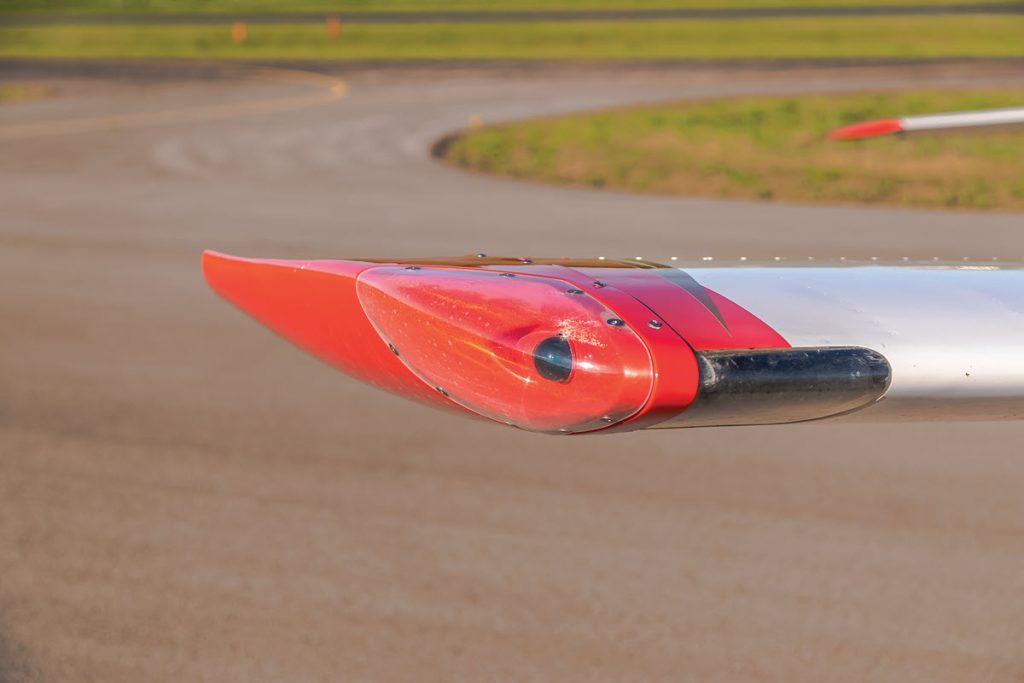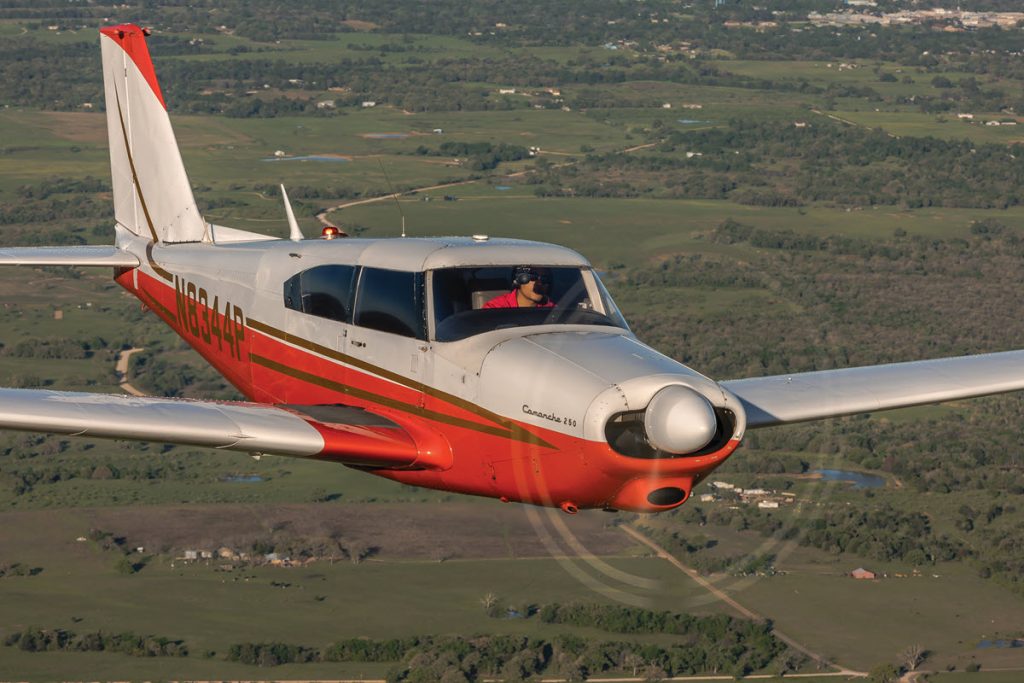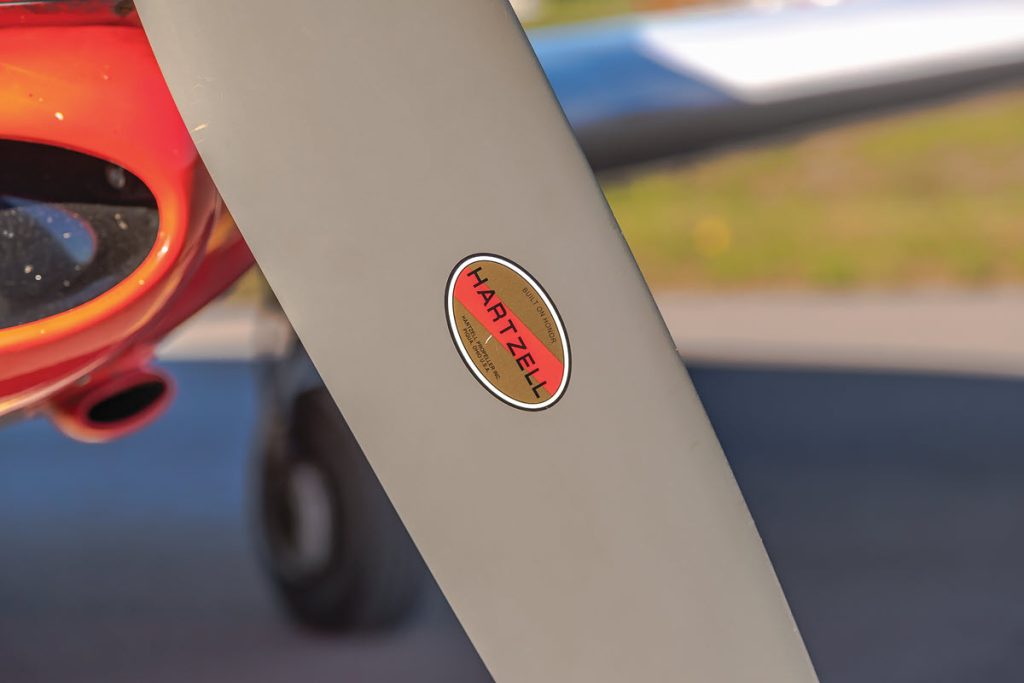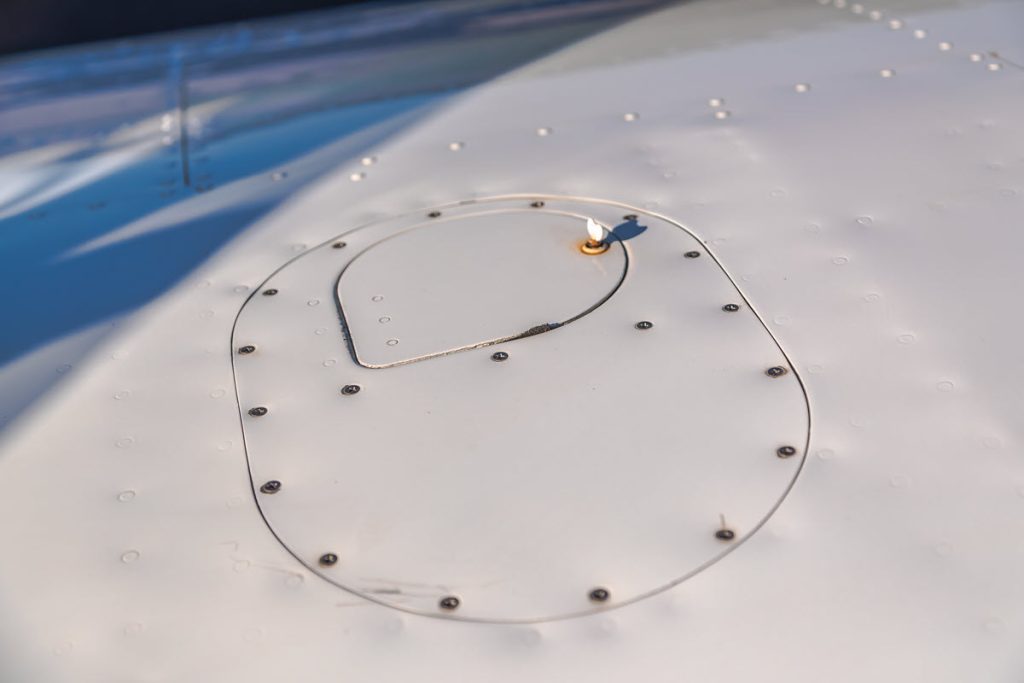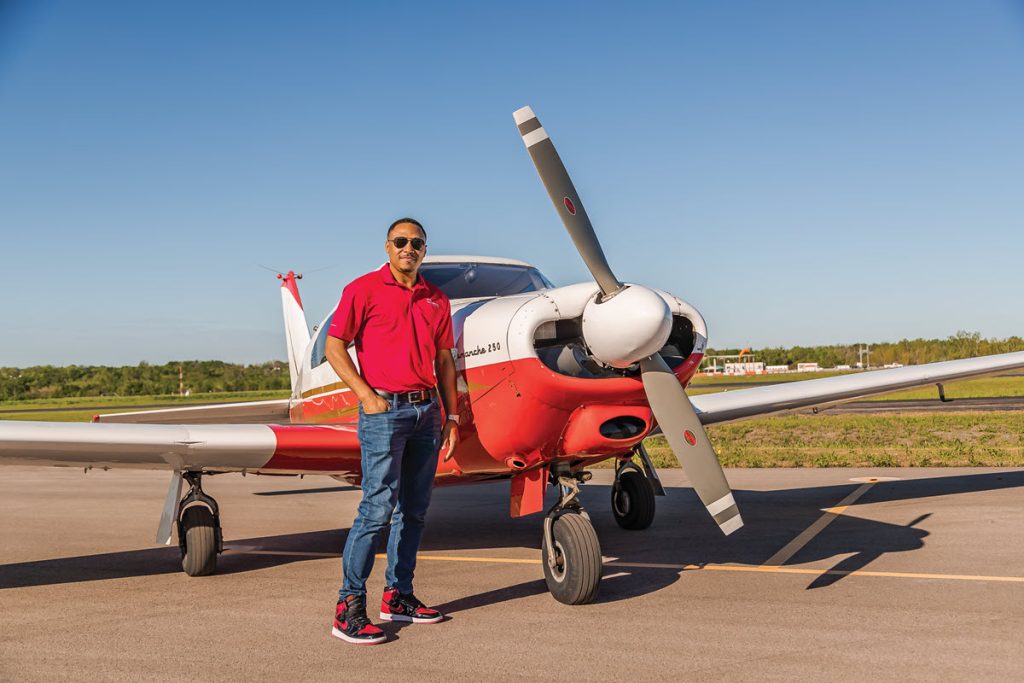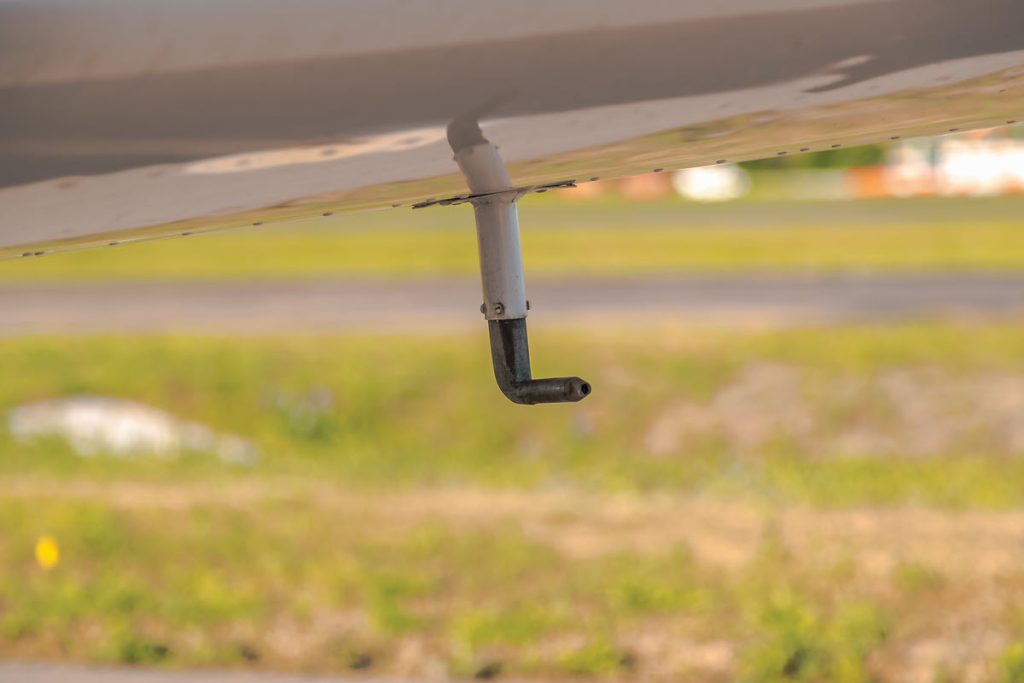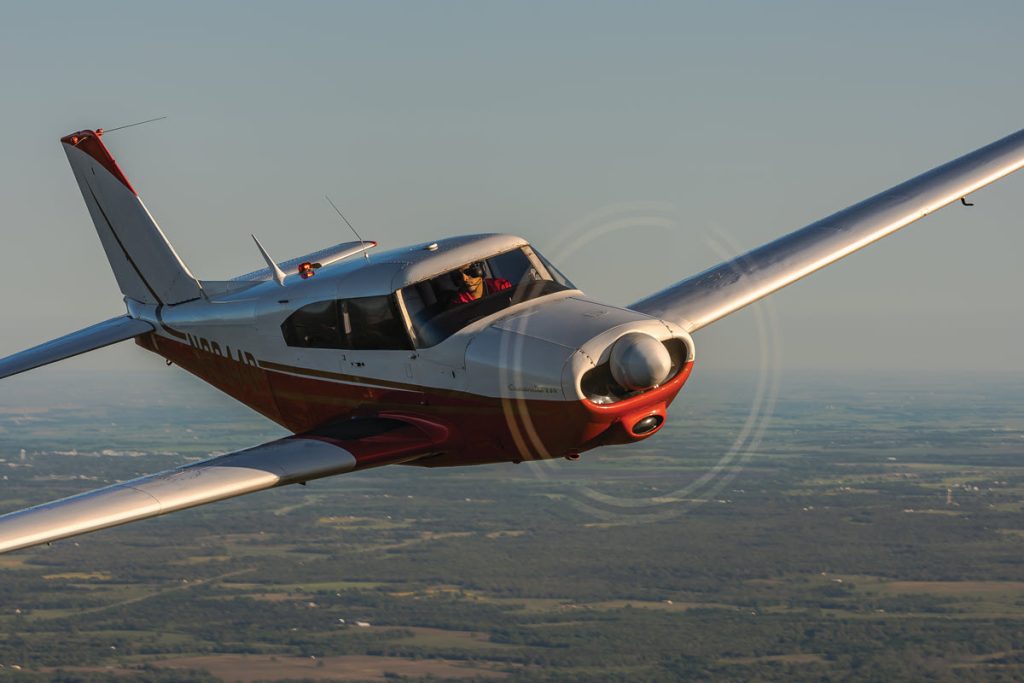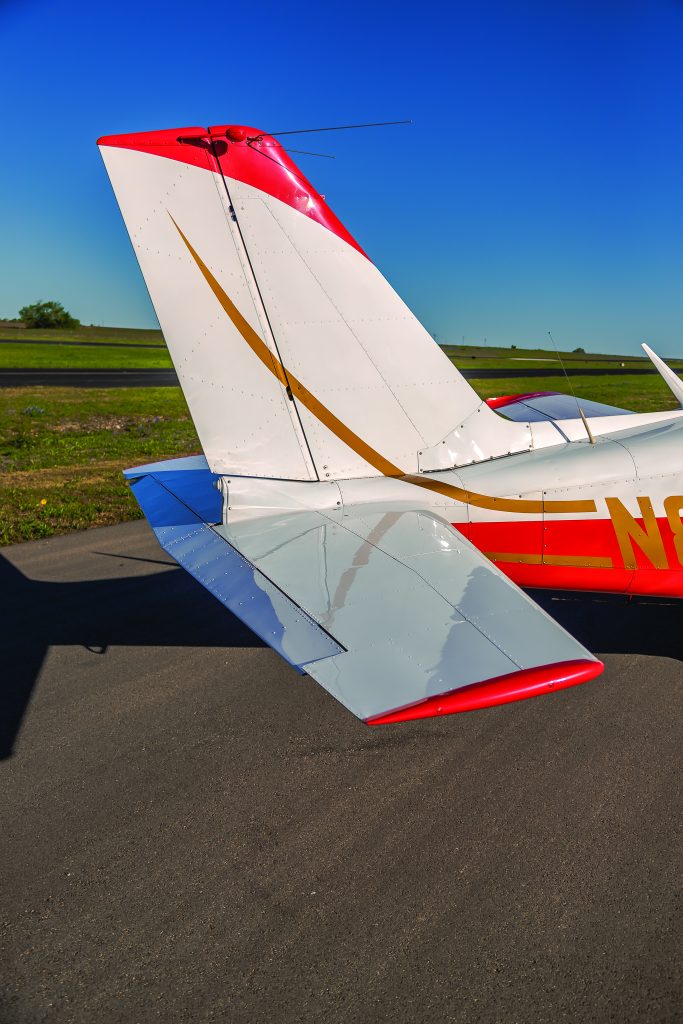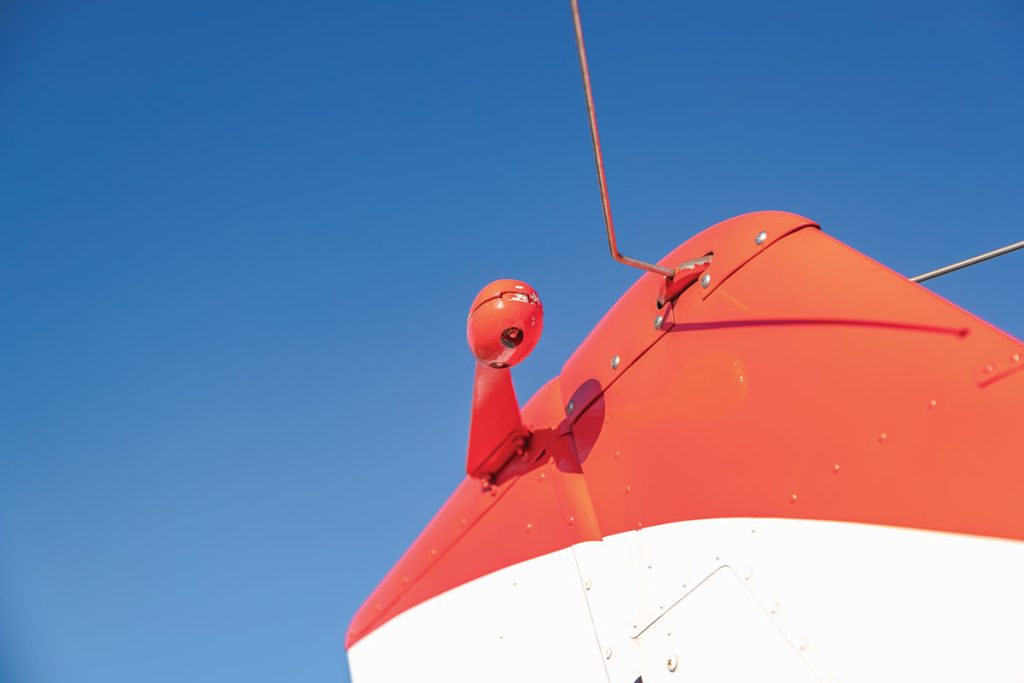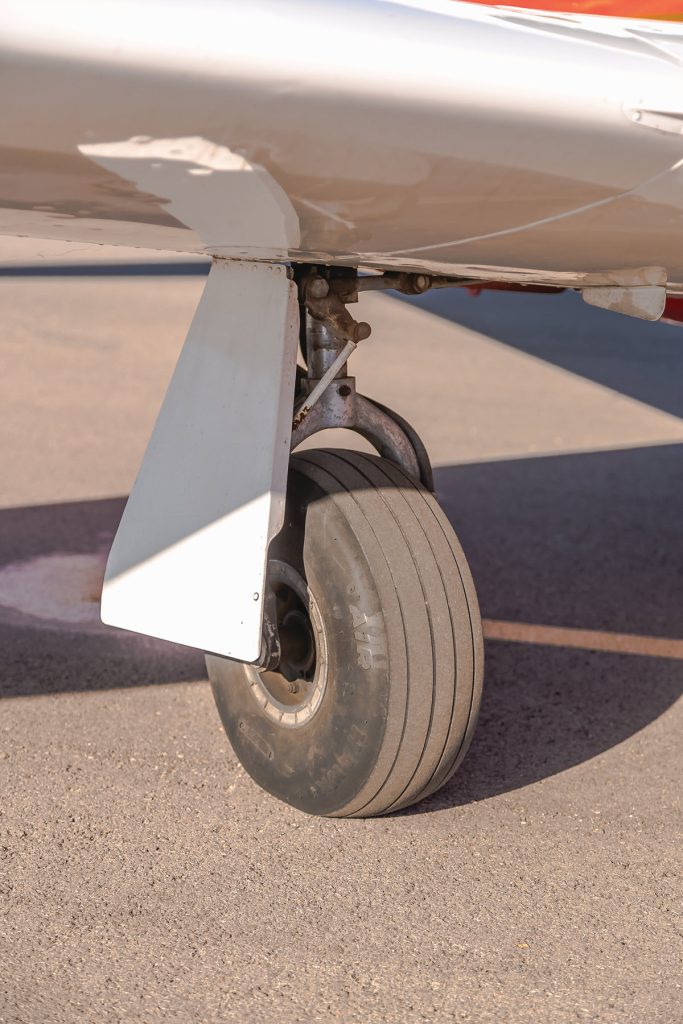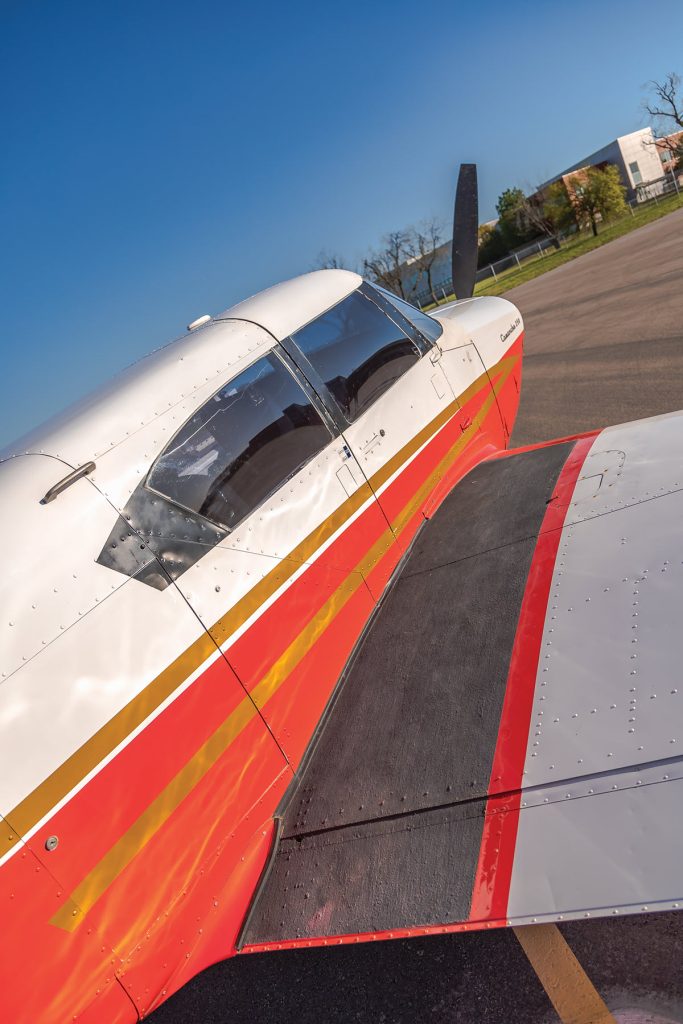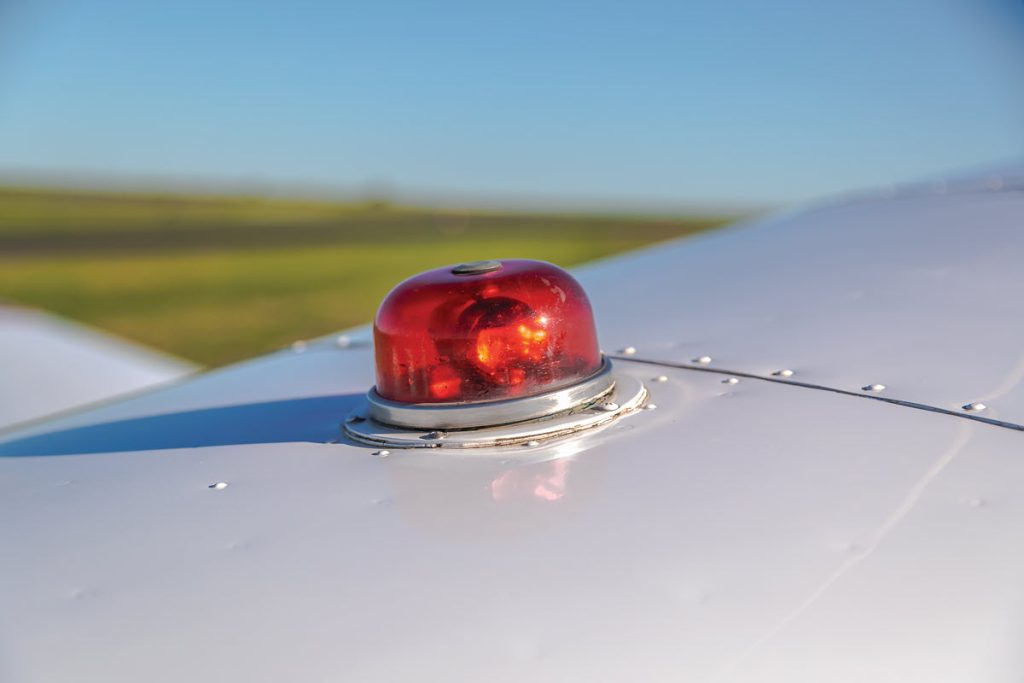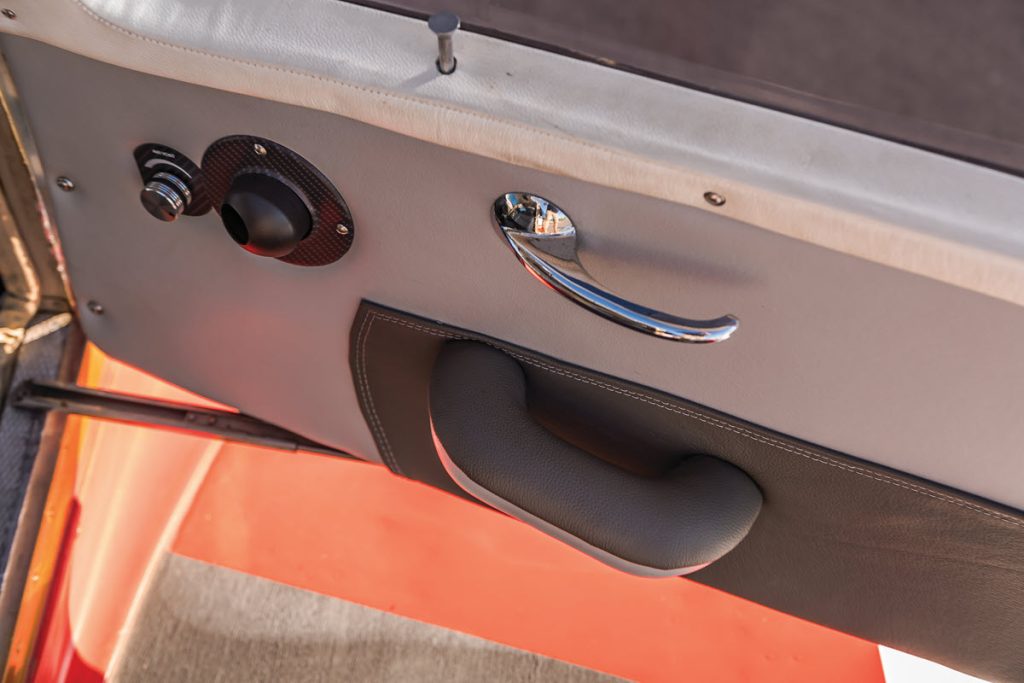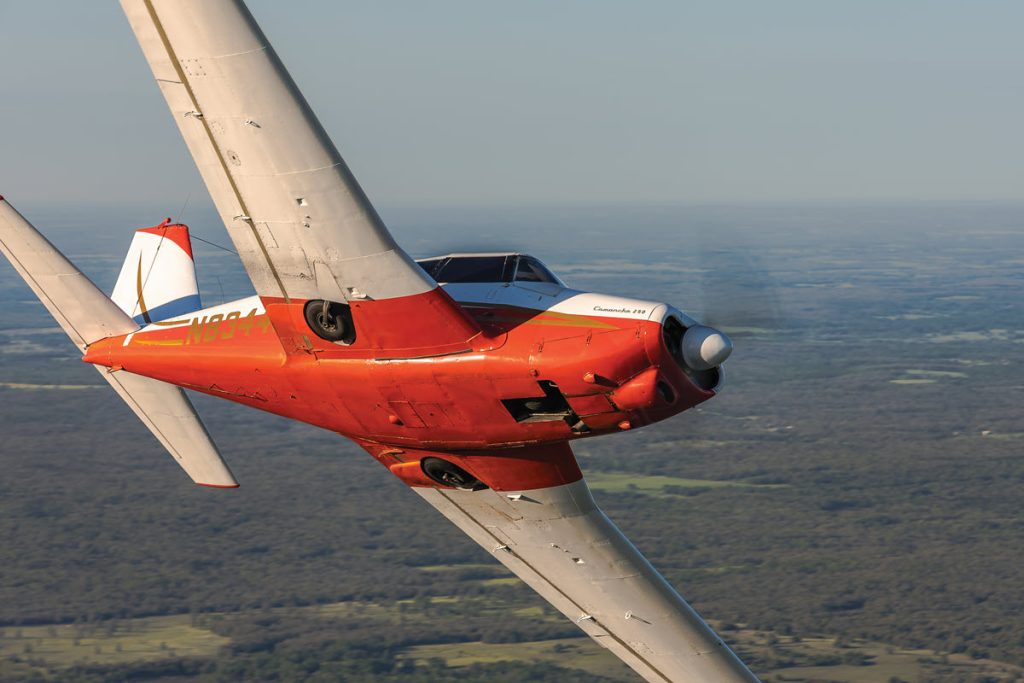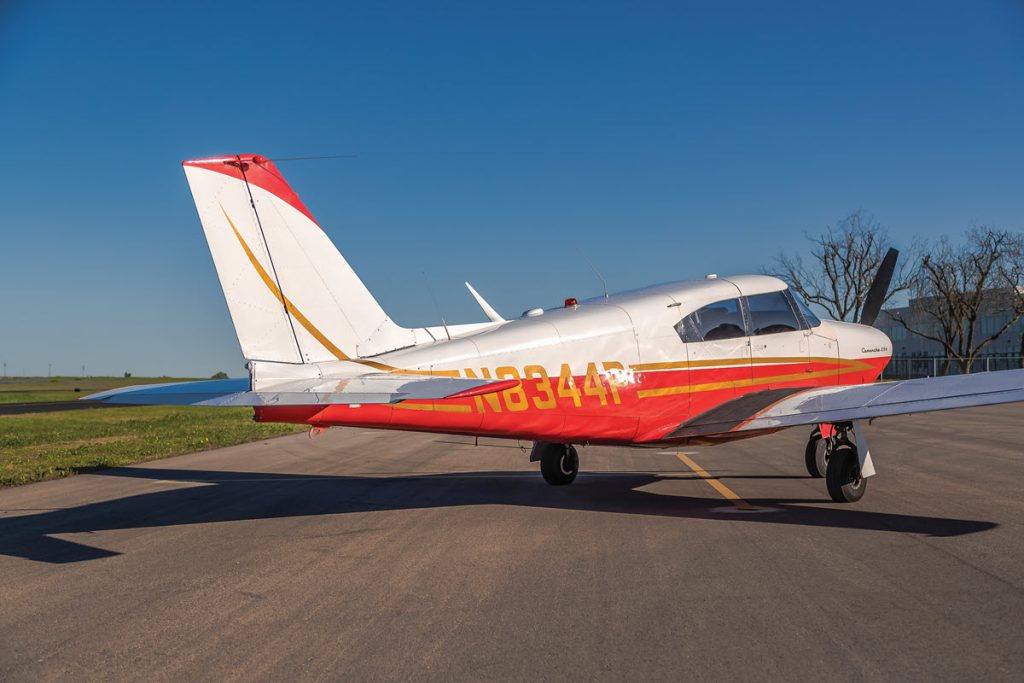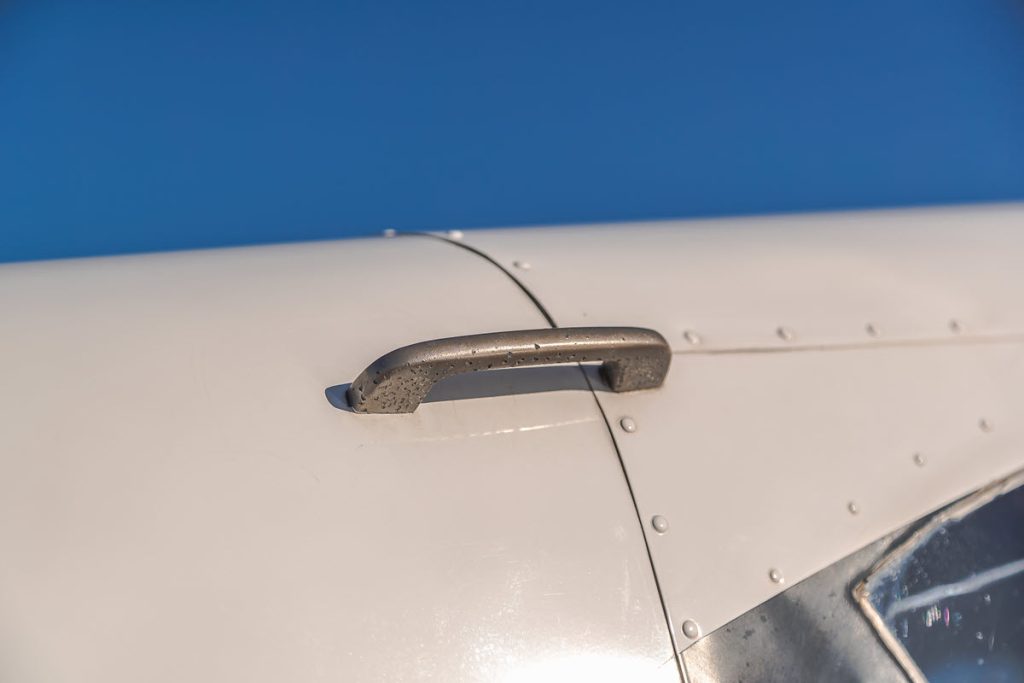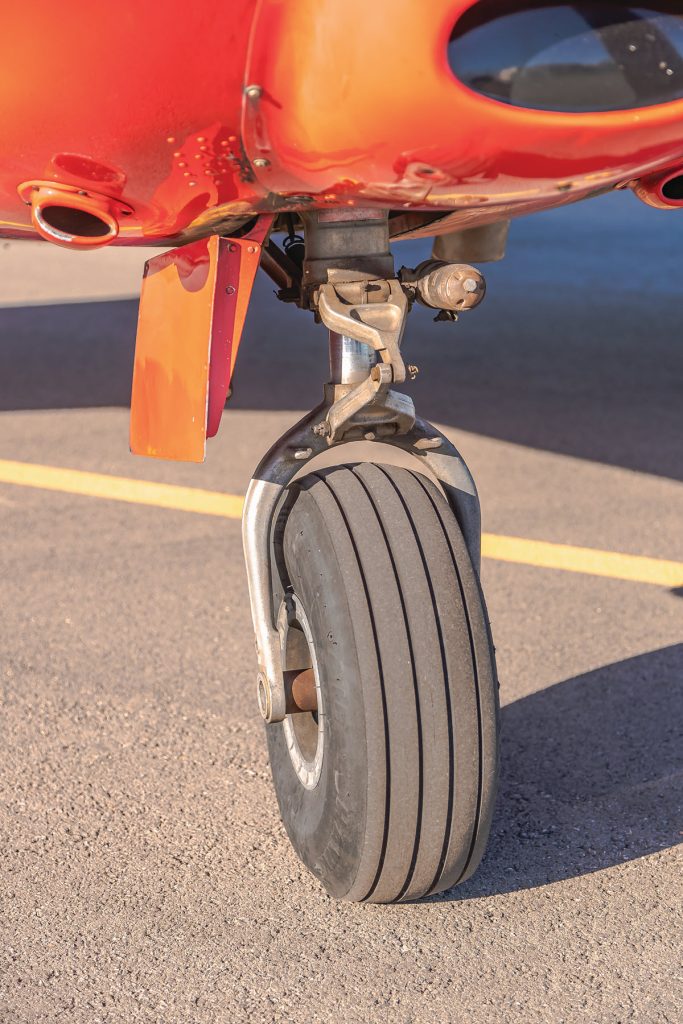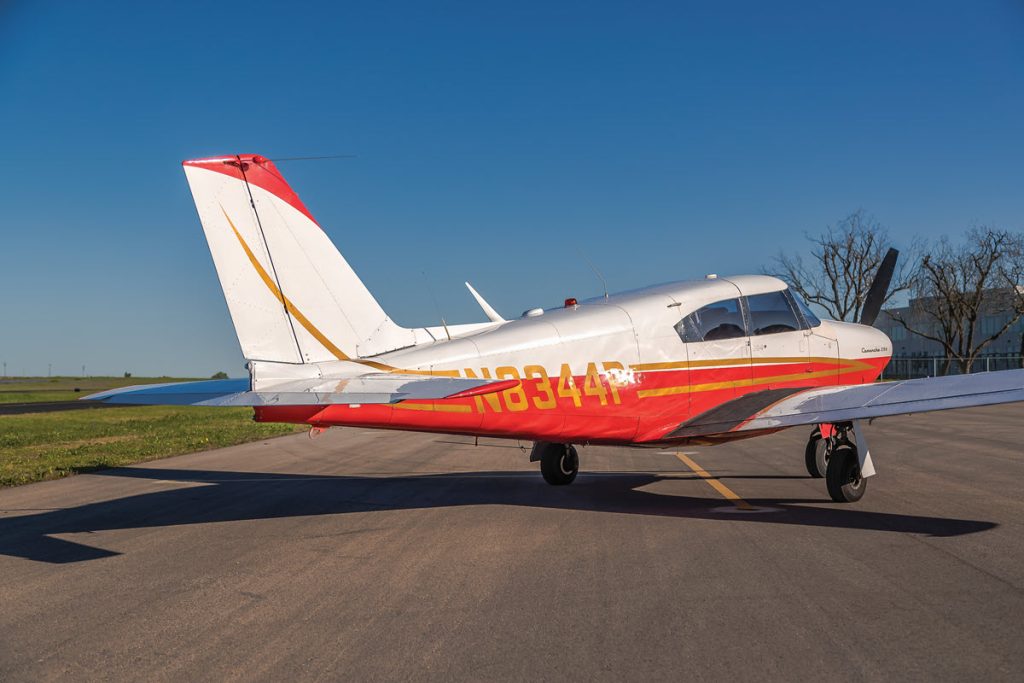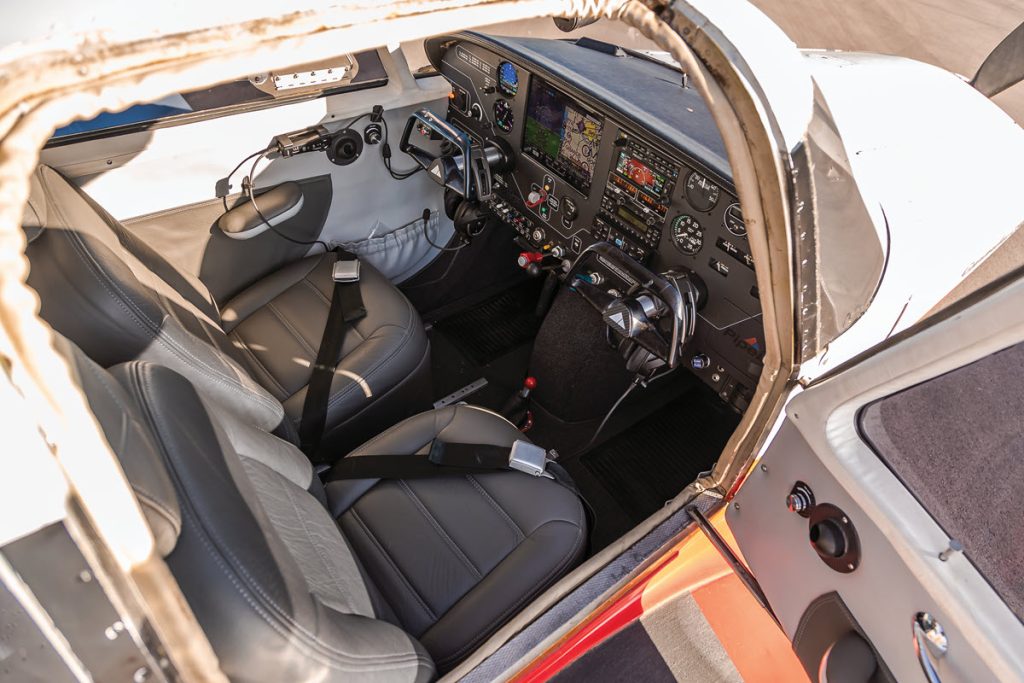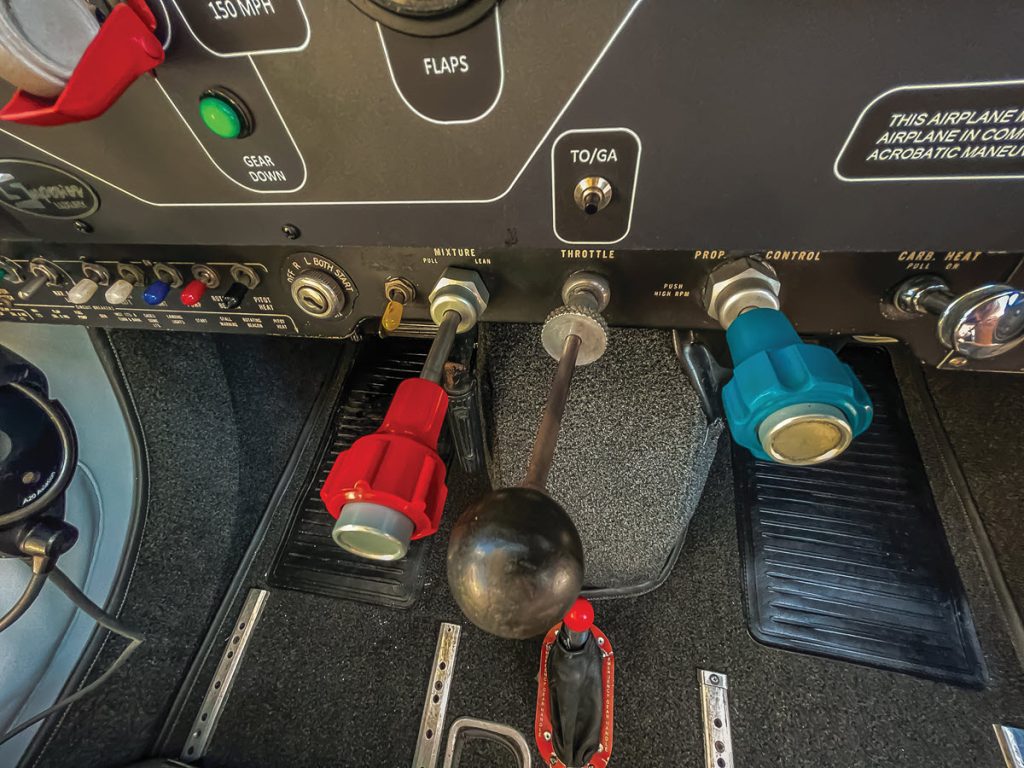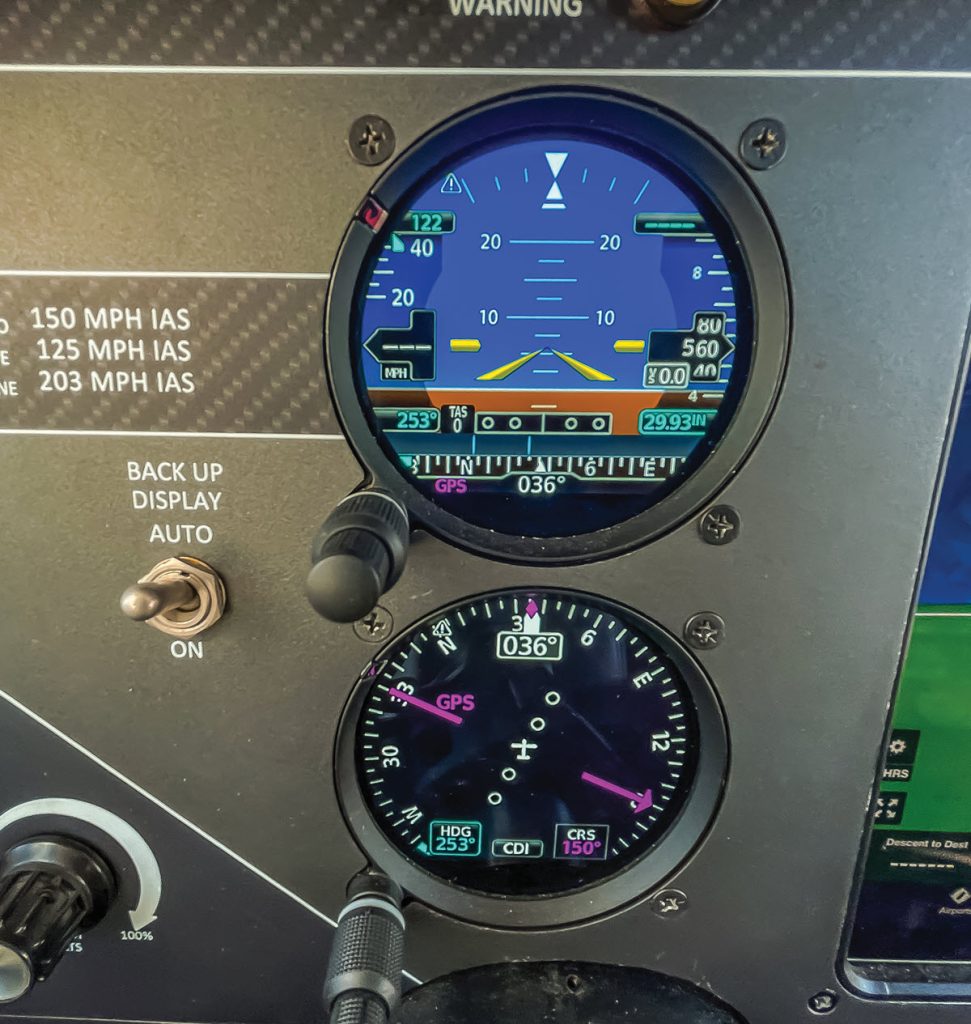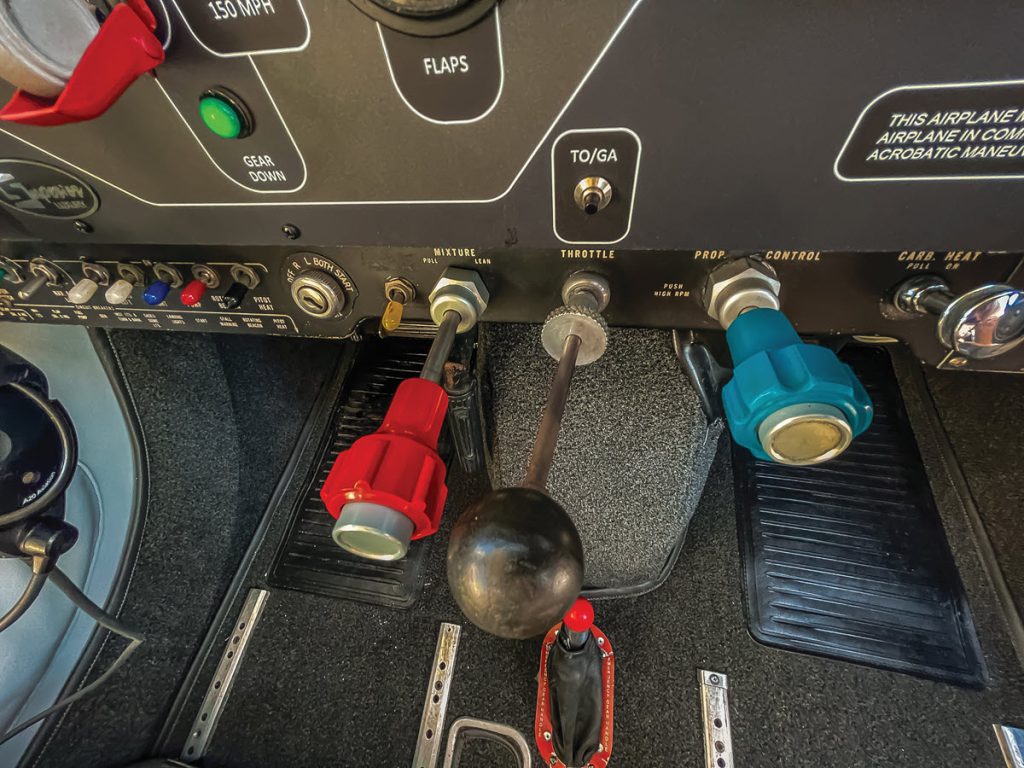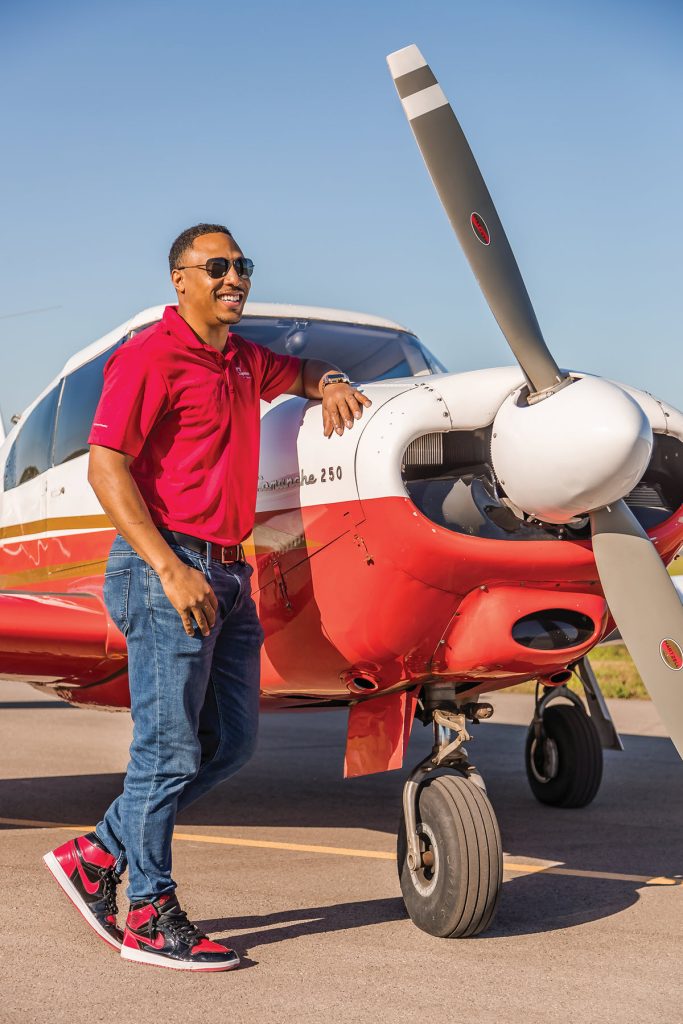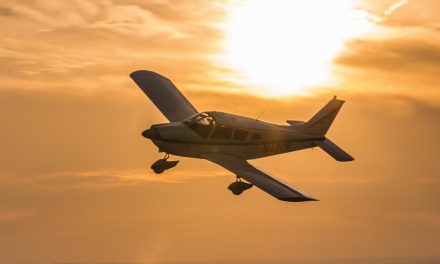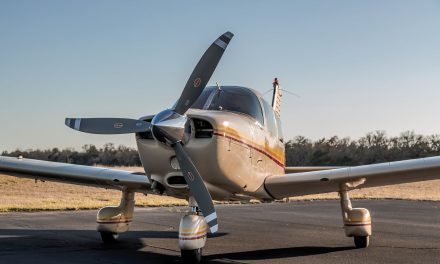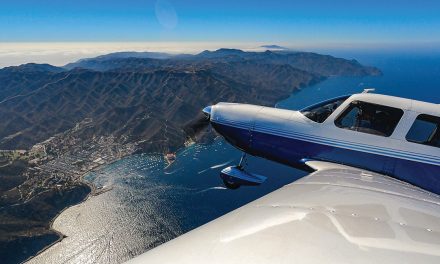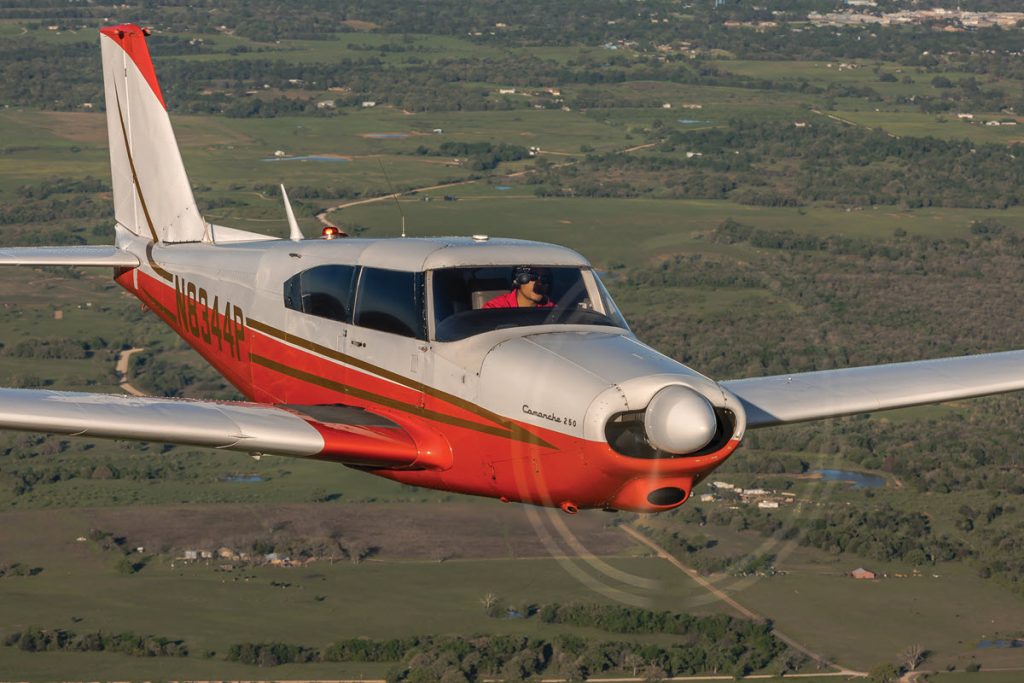
By Stephanie Finnegan
Kranston Kindcaid’s Comanche 250 Soars High
Most people aspire to higher positions in life. It’s the natural order of things. For Kranston Kincaid, it wasn’t just a figurative desire to do more and to attain more. Growing up, he would watch birds effortlessly soaring in the skies and wonder if he could join them. Creative and inquisitive, he attempted to fabricate a parachute from a trash bag, but he admits it wasn’t exactly what he had envisioned. Still determined to reach the skies, at age 13, he next tried his hand at making a hang glider.
“Luckily, that wasn’t successful, because knowing what I now know, that thing would have never flown. But it was an attempt, right? I was sitting there taking scrap pieces of aluminum rods and trying to make them fit together in a triangle of what I thought would be a hang glider,” Kranston recalled.
That optimism and can-do spirit defined him as a teen, and it continues to underscore his life choices — personally and professionally. Having excelled in the world of financial advising and wealth management, along with currently helming the aviation company Superior Aircraft Components, he has always risen to life’s challenges. His inherent tendency to see an opportunity and to follow his gut has served him well, even with his decision to purchase N8344P, a 1964 Piper PA-24-250. “Most people would say I was crazy for not getting a pre-buy. But I felt really good about the plane, and the plane kind of talked to me. So I went ahead and bought it. I got the Comanche, and I couldn’t be any happier.”
The Pflugerville, Texas, resident is used to setting his own course, and his journey to become a pilot, a plane owner, and an aviation entrepreneur is a destination that he always knew he could accomplish. He just had to take the first flight.
Top Gun Tops Kranston’s Checklist
Growing up in Colp, Illinois, Kranston didn’t know anyone involved in aviation. The world of flying and airports and airplanes was cloaked in mystery and intrigue for him. “We used to drive past a local airport, and I was just always curious about what went on there. All I saw were these buildings — that I now know are hangars — and this long road that no one ever used. A fence encompassed it, and I just always wondered what was going on. I didn’t know any pilots. I didn’t know anyone who flew in there, so I was curious about just what was going on over there. I was told that it was an airport, but it had no real connection to me. I just wanted to learn what happened beyond those gates.”
Drawn to how things fit and work together, Kranston enjoyed mechanical tinkering, entry-level engineering pastimes. “I’ve just always been fascinated with things that move and work, like cars, and planes were just one of those things that was just kind of out of reach. However, I always wanted to be a part of that community.”
Like millions of moviegoers around the world, Kranston grew up watching Top Gun, and just like the Tom Cruise Maverick character, he fell under the spell of speed and adventure. While in college, he decided that a post-graduate stint in the Air Force would let him into that rarified world of piloting and flying, plus it would help him pay for law school. “I went to take the test and I did pass all of their requirements. However, they were not looking for pilots at that time. What they were looking for were navigators. And I decided that, at 21, I wanted to be the pilot. I didn’t want to be a navigator. I was a testosterone-filled boy, and I was like, ‘No way. I want to fly it!’ So I ended up going to law school on my own. And once I left law school, I still had the bug and really wanted to fly.”
Pursuing the Wright Stuff
After leaving his law education, Kranston realized he hadn’t left his winged ambitions behind. “My son was very interested in planes, and he wanted an RC plane. So we bought our first RC and I took more of an interest in it than he did. I flew those for a while. But then I just couldn’t stand looking up at that plane flying around and not being in it. So around 2010, I took my first flight, and that was the beginning of the end, right? I took my first flight, and I couldn’t stop.”
Channeling the same desires that Wilbur and Orville Wright must have felt, 30-year-old Kranston knew that he was meant to be up in the air. He didn’t want to remain earthbound. However, he had no personal connections to anyone who piloted an aircraft. This was an exotic, unknown arena. “When I went looking for schools to start lessons, I almost didn’t believe that it was going to happen. And when I finally landed on the school, I had a few hundred dollars saved, so I decided, ‘OK, I’ll take some lessons and see how that goes. And the first time I got behind a yoke, I was absolutely hooked, just by lifting off the ground and being suspended in air. I don’t know that it even represented freedom or independence to me. It was just something like, ‘I have to keep doing this.’ It was something that very few people do in life, but I had to,” he explained.
“Of course, every kid growing up loved Top Gun. That was kind of the inspiration for my wanting to go to the Air Force and be a fighter pilot. Back then, it was because of the speed, the adrenaline, the movement. That was completely different from when we get into general aviation, though. Even if you are going fast, the calmness of flying and the speed is actually really reduced to where it’s unrecognizable. It’s more of a peaceful thing. So for me, getting a pilot’s license was really all about completing a task that I had started.”
Mother Knows Best
During his childhood, Kranston played many sports and tried his hand at many different pastimes. Throughout all of these various endeavors, one mantra remained true: “If you start something, you have to complete it.” Kranston’s mom issued that mandate to her children. If they wanted to belong to a new organization or join a team, they had to give it their full attention and commitment. Kranston carried that sense of obligation and duty to his flying lessons.
“With the pilot’s license, the minute that I took the first discovery flight, it was something that I knew I was going to have to finish. I didn’t have expectations beyond that. Of course, I thought it would be cool to rent a plane one weekend and take my family out, fly them somewhere, and then be able to come back. I think that was probably the coolest part of it — you could be in one space one minute and then a couple of hours later be in a completely different space. For the most part, you are compressing time. And so I thought that would be the biggest thing for me, but I’ve now learned that there’s a lot more, and it has a lot more meaning to me these days.”
In fact, when Kranston earned his pilot’s license, his instructor imparted a bit of advice that initially “seemed offensive,” Kranston said, but which he’s come to understand is wisdom. “My instructor said, ‘Okay, you have your pilot’s license. It’s not a license to fly. It’s a license to learn.’ And I would say there’s nothing that can be said any better than that. I think as we fly, every time we go up, we learn something. No two days are the same, and complacency is something that could harm you.”
1964 Piper PA-24-250 Comanche
All vintage Planes are different. Do not use these to plan a flight. Source: Standard Catalog of Piper Single Engine Aircraft (Piper Owner Society).
| Engine | Lycoming O-540-A1D5 |
| Horsepower | 250 |
| Top Speed | 190 mph (165 kts) |
| Cruise Speed | 182 mph (158 kts) |
| Economy Speed | 163 mph (142 kts) |
| Fuel Capacity | 60 gal (100LL) |
| Range | 790 sm (@ cruise) |
| 1,460 sm (@ economy) | |
| Gross Weight | 2,900 lbs |
| Empty Weight | 1,690 lbs |
| Ave. Useful Load | 1,210 lbs |
| Takeoff Ground Roll | 1,180 feet |
| Takeoff Over 50 ft Obstacle | 1,625 feet |
| Landing Ground Roll | 920 feet |
| Landing Over 50 ft Obstacle | 1,420 feet |
| Rate of Climb | 1,350 fpm |
| Service Ceiling | 20,000 feet |
| Doors | 1 passenger, 1 cargo |
| Seats | 4 standard, 0 optional |
| Dimensions (all approx.) | |
| Fuselage Length | 24 feet, 10-5/6 inches |
| Fuselage Height | 7 feet, 4-1/2 inches |
| Total Wingspan | 35 feet, 11-3/4 inches |
Ruby Makes Her Debut
When Kranston muses about his childhood flirtations with flying — homemade parachutes and hang gliders — he appreciates how far he has come: “I got my pilot’s license and went on to get my instrument, and it’s been one of the most liberating things that I have ever experienced. I never thought growing up that I would be a pilot and then have plane ownership — actually two planes. So I’ve gone through two planes now, and it’s just one of those things that I couldn’t ask for anything better. The plane that I have now is the 1964 PA-24-250, which is known as the Comanche 250, N8344 Papa, and we have a connection together. My Comanche is really special; I’ve named her Ruby, and we’ve been through a lot.”
Before coming across Ruby, Kranston owned a Piper Cherokee 140, which was reliable, but he wanted it to do more and go faster. “I was taking a lot of trips back and forth to Illinois to see my family, but I wanted to go out West and look at mountains and other natural formations. I love being outdoors, and the 140 just took a little longer than I wanted. I got on the internet and started looking up what were some of the fastest planes and what could carry my family, because I do have two boys. I wanted something we could all go in, and every time the Comanche kept coming up as one of the planes that could carry just about anything you can put in it, as well as go pretty fast. I looked at a couple of planes. I knew that I was going to have to do some maintenance on a plane to make it my own, but I didn’t want to do a lot at the time.”
As fate would have it, a Comanche 250 was waiting for him in Illinois, his childhood home state. It was a coincidence that didn’t escape his attention, and he traded in his Cherokee for the Comanche, knowing deep down that he made the right decision. “I knew that it didn’t have the avionics, but I had a little bit of avionics experience with the previous plane, as far as upgrading. And as long as the engine was good, the paint was good, and the interior was good, I was OK with upgrading the avionics. That’s what really drew me to the plane — and it had low time. I flew up to Illinois and the plane was in really good condition. We flew it for three days while I was there. The seller, who is also an instructor, gave me all the transition training, and I remember him saying, ‘There’s nothing else I can do for you. You got it.’ And I flew home in the plane. It was just so amazing to have my second plane after coming from a place where I didn’t even know what planes were and didn’t know anybody who owned one plane, let alone their second plane. So that was pretty cool for me,” Kranston said.
What Makes Ruby Shine So Bright
Even though Kranston declined a pre-buy, his instinct about Ruby being the correct choice was right on target. He is absolutely pleased with their ongoing relationship: “The Piper Comanche is a great plane because it does everything well. You can’t ask for much more from a plane when you look at the useful load of this particular plane. It’s like 1,300 pounds, and regarding the endurance of the plane, you can get six hours out of it if you’re careful. And then the speed? You can easily get 165 knots out of this plane if you do certain upgrades and you have your rigging correct, your maintenance up to date, and a fresh engine. There aren’t many planes in the market in the single-engine piston category that will give you all of those things. It’s roomier than some other planes in the market, which I love. I’m not shoulder-to-shoulder, basically hugging the person on the passenger side. We have a little bit of room, so I love this plane.”
If a friend considered buying a Comanche, Kranston would encourage him wholeheartedly, but he added a word of caution: “Be very good at checklists and pay attention to speeds. I think that’s the biggest thing. Everyone says Comanches are hard to land, which they can be, but I adapted to it really fast. You have to control speed and mind your numbers. I think that if you want this plane, you should definitely put wing root fairings and fillets on the plane and flap gap seals, not necessarily for speed but for the landing characteristics of this plane. I can better grease the landings just about every time because of those upgrades. And you may get a little bit of speed benefit from it, but it really does make the stall characteristics and the landing characteristics of it more like a Cherokee.”
The Nike Principle
Since the purchase of a plane is daunting for many pilots and aviation enthusiasts, Kranston has a succinct motto to persuade them: “Just own it.” He leapt over that mental hurdle when he compared the costs of owning of a plane versus driving everywhere and/or buying commercial tickets.
“I bought a sports car before, and it’s no different. I think it’s actually less expensive than owning the sports car. What people don’t realize is that you can get into a plane pretty inexpensively, knowing that you may have to put a little bit of work into it, but there are planes out there that are $20,000 or $30,000. And if you think about it, your average car right now is about $40,000. I think the best thing about owning my own plane is being able to have a spur-of-the-moment weekend and go, ‘Man, it’s nice outside’ and go fly to another destination and have a great time and still be able to make it home. Get in your plane and go, even if the weather isn’t beautiful outside and you know the weather is good somewhere else — you can really make a gloomy day something nice if you’re instrument rated. You can have these mini vacations, and squeeze a lot more into your time, especially if you’re busy.”
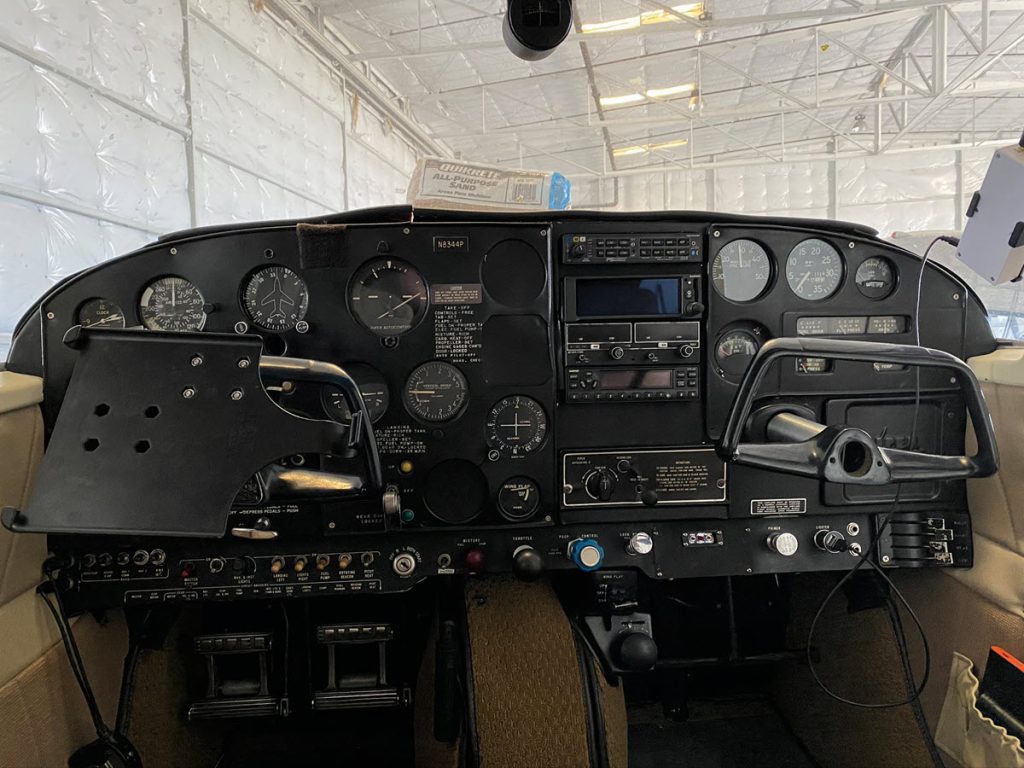
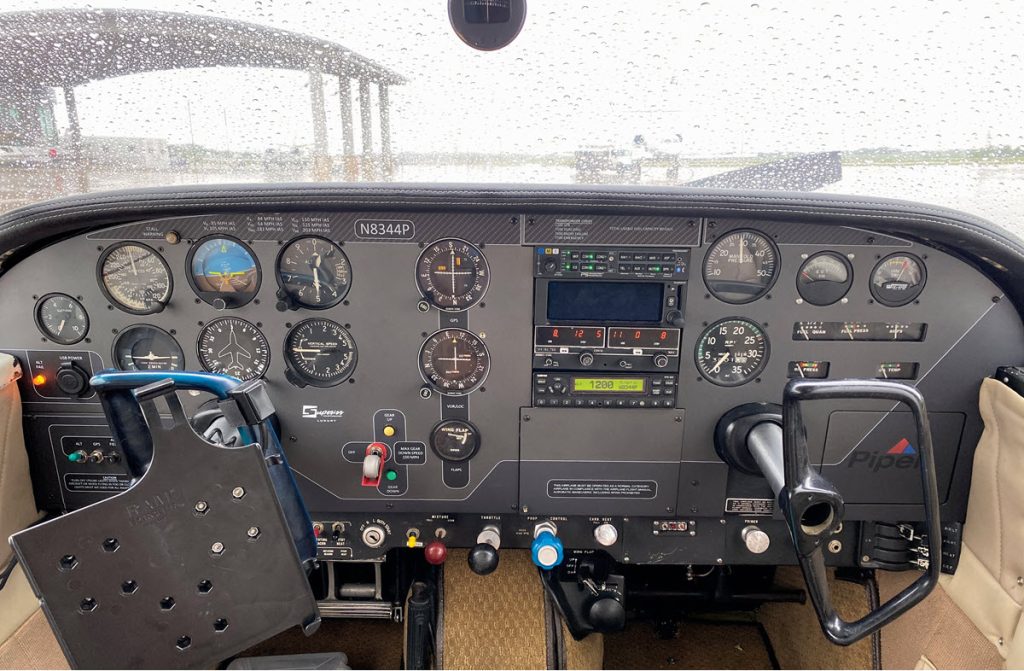
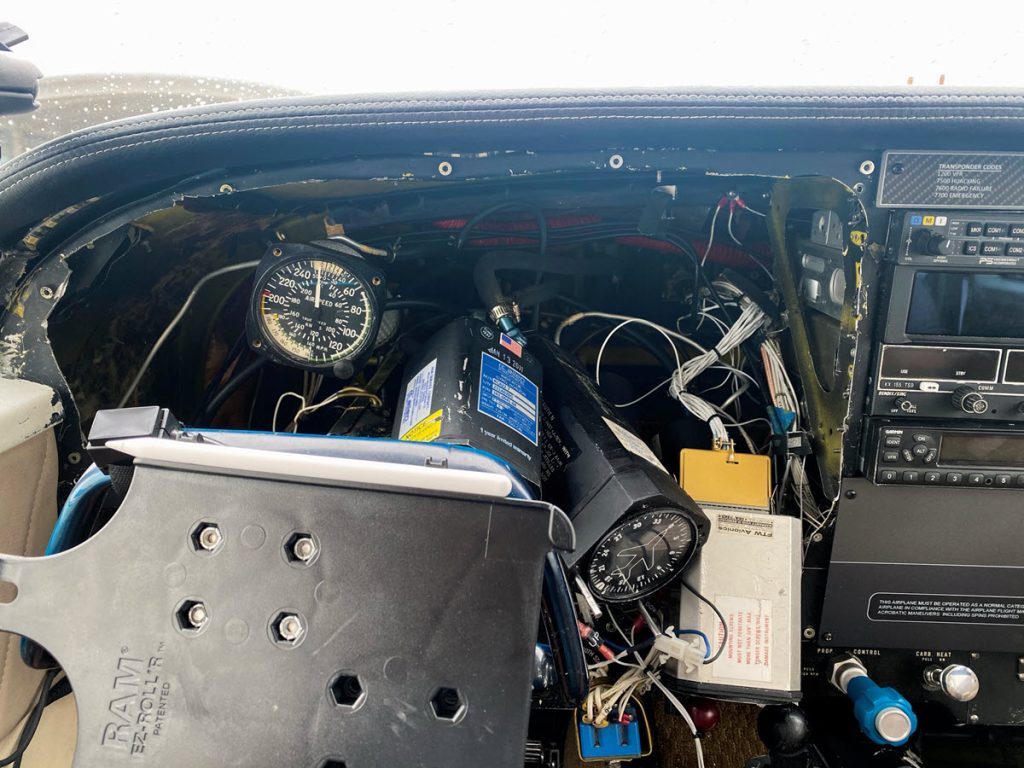
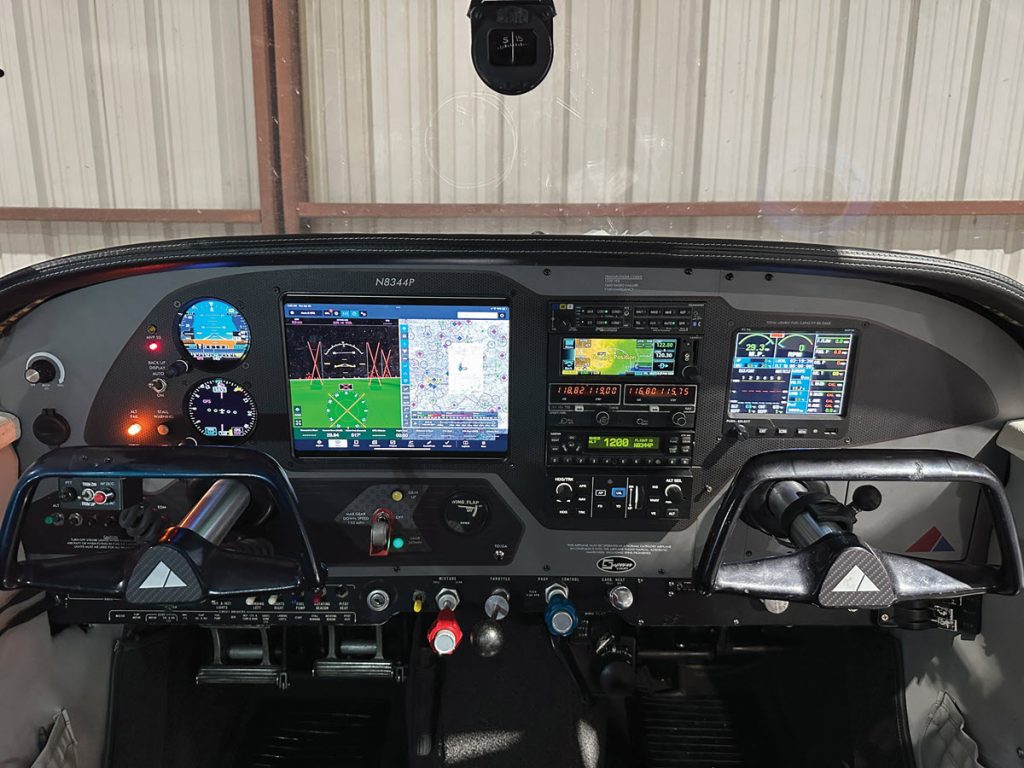
HOW RUBY GOT HER GROOVE BACK
According to Kranston Kincaid, any consumer interested in buying a plane built in the 1960s or earlier will be immersed in renovating and upgrading. He was aware of that when he brought home Ruby, his Comanche 250. “Now that I have done this twice, I would say, buy a plane as close to what you want it to be, and then do the little extra work. You’re going to have to pick what you want to upgrade. Some planes may have great avionics and they need a paint job. If that’s the lesser of your evils, then you buy that plane and plan on getting a paint job. Or the plane may have everything you want, but the engine is run out. So you’re going to have to replace the engine. I think you put that into your budget and say, ‘Okay, I’m getting this plane at a really good deal. But these are the things that I know I’m going to have to address’ or ‘This is how long I can live with what the plane already has.’ It’s all up to you.”
Kranston had the following alterations done to Ruby:
- Replaced the Radio
- Added GNC 355 GPS
- Installed dual GI 275s
- Added a GFC 500 autopilot
- Installed a King KX 1556 Nav/Com
- Installed an MVP 50 engine analyzer
- Replaced the interior with leather
- Put in new carpet and new sidewalls
- Added speed mods by Knots 2U
- Added flap gap seals, aileron gap seals, wing foot fairings, and Johnson wing tips
- Replaced the baffles
- Installed .25-inch-thick windows
- Added a glareshield brow
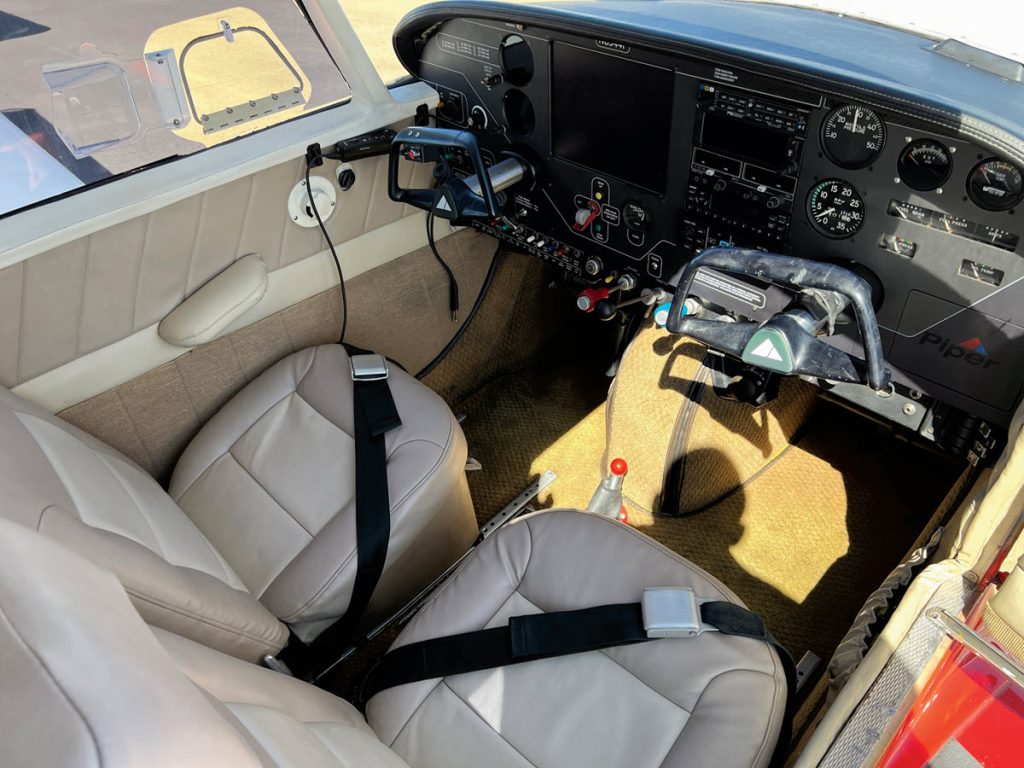
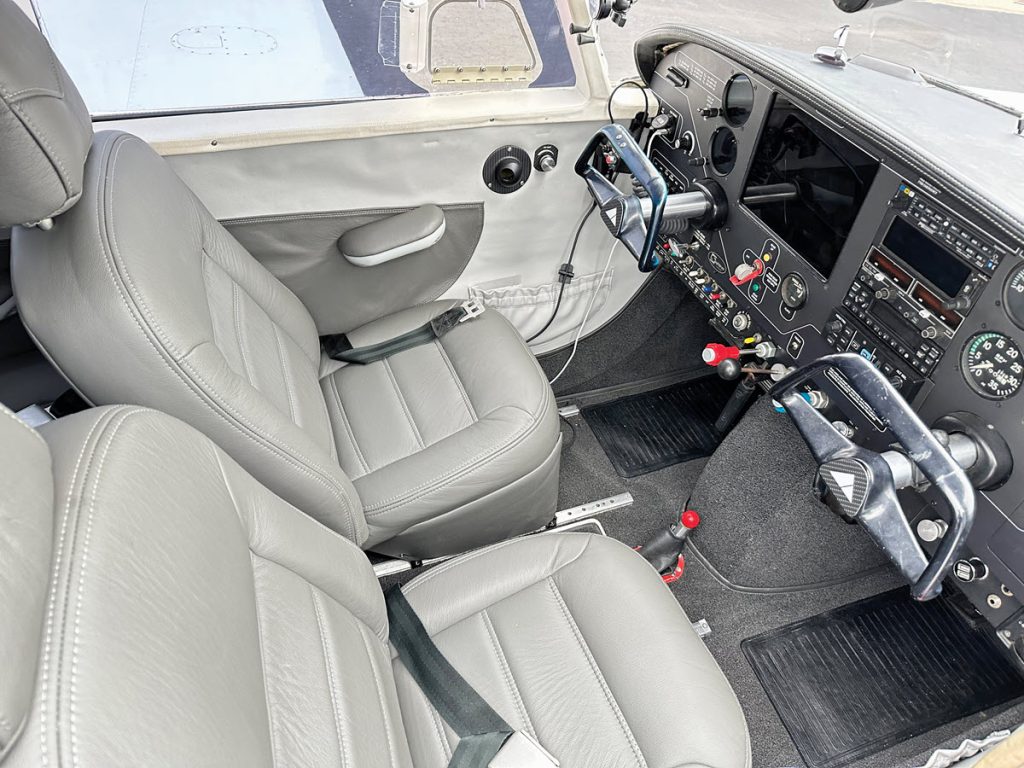
All Aboard!
Today, Kranston is 42 years old and has been flying for 13 years. He is the father of two sons, Keigan and Zeriah, aged 24 and 17. He has offered them flying lessons and the opportunity to slide behind the controls, but they have so far declined. “They think it’s kind of a crazy-dad thing, and I think that they will appreciate it a little bit later. Once they realize that it’s not something that’s common, because they’ve kind of grown up with me having all types of toys. I’ve had motorcycles; I’ve paraglided, powered paragliding. I had a Jet Ski, had a boat, had a sports car. All of these things are just what I do. I really love machines, especially fast machines. I like the performance of fast machines and impressive machines. It’s just amazing what engineering can do and how far it can take us.”
Kranston loves the opportunity to introduce newbie passengers to the flying experience. “I enjoy taking people up, especially kids that have never been in a plane or haven’t seen the general aviation experience. I know what it was like to drive past a place and not ever know what was going on there. And so I want to take that mystery away and spark that curiosity,” he said. “And even though I haven’t gotten a chance to fly an Angel Flight mission yet, because business has kept me kind of stricken from doing that, I did sign up for that, once I had received my instrument rating. And I still have plans to do that, because I really think giving back is important, especially when people don’t have the resources.”
The flying experience he ranks as his highest is when he coaxed his parents aboard his aircraft. “I thought, one, I would never have this opportunity to own a plane — let alone have this opportunity to have my parents in a plane together. And I think it was probably the most satisfying thing, and I could live the rest of life knowing that it happened. What would have been a two-hour drive to my sister’s turned into a 20-minute flight. And although both of them were really resistant at first, I knew I had their approval. My dad was like, ‘Okay, yeah, that was way better than driving. Took a lot of time off,’ and he was really interested in all the instruments and everything that I was doing. And my mom, who is the toughest nut of them all to crack, wouldn’t tell me I gave these guys a perfect landing. She simply said, ‘Oh, it was good,’ but I knew I had her when she started saying, ‘All I need is a little stepstool and then we could go here and there.’ With that, she could fly more, wanted to fly more, and that just set my heart on fire. It was the best experience I think I’ve had.”
Kudos to Kranston’s Cohort
Kranston’s family have always factored heavily in his day-to-day activities. He is especially grateful to his sister, Rochelle. “I talk to her just about every day, whether it’s about my plane, about flying, or about the business. She’s learning a lot more about aviation just because of our conversations. And she’s always told me to go for it. I don’t think that I’ve had many ideas where she was like, ‘I think that’s dumb.’ Whenever I explore and push the boundaries of ‘Hey, I think I want to do this,’ she’s always telling me, ‘Why not? Go for it. You should do it.’ Having that support makes it a lot easier and makes you want to pursue that idea and that dream.”
The second person he acknowledges is his A&P, Ken Smith, of Ken’s Mobile Mechanics in Lockhart. “Without him, I probably wouldn’t know a quarter of the stuff that I know about planes, and it all started from that Cherokee 140. He was super amazing in helping me build that plane back up and explained everything to me, even just, you know, rockers and clearances. He covered all this stuff, like why we needed tight tolerance bolts for the wings. He explained everything, including why things were the way they were in aviation, and it really helped me a lot, so I still ask him a ton of questions. If I have something with a panel or anything, I know that I can call him, and he’s been a great mentor in this whole journey in this business together.”
Finally, Kranston Kincaid is humbled and honored to be a part of the entire aviation community: “If you get a chance to own a plane, you’re in a fraternity for life. And you have a lot of supportive people around you where you all share something that not many people do share. It’s really easy to forget that you are in a very special place. Because all of your friends start to become plane owners and you start to see the world as if everybody owns a plane, so it’s really cool to take a step back. When people look at you in shock and go, ‘What!? You have a plane,’ and, of course, they’re thinking it’s a jet, but you know any plane is still significant. And so I think that the best part of it is that you get such a great community and people look at you a lot differently, as if you could move mountains almost. It’s something that you have to take in and say, ‘Okay, I’m really grateful and blessed to be in this position.’”
Select a photo to open a pop-up slide show
